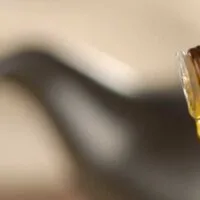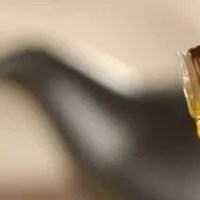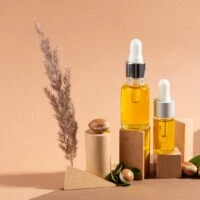Frankincense oil, often revered as the “King of Oils,” carries with it a legacy as rich and enduring as its aroma. This esteemed essential oil has woven its way through historical tapestries, from ancient civilizations to modern wellness practices, marking its significance across millennia. Originating from the resin of the Boswellia tree, which is found in the arid, mountainous regions of India, Africa, and the Middle East, frankincense has played a pivotal role in religious ceremonies, traditional medicine, and even the rites of royalty. Notably, it was one of the gifts offered by the three wise men to the newborn Jesus, a testament to its value and sacredness.
The therapeutic uses of frankincense oil are as diverse as its history is long. From its potential to soothe wounds and scars to its purported benefits for the immune system, frankincense oil has been utilized in a myriad of ways to promote health and well-being. Its ability to reduce stress and anxiety, support neurological function, and even aid in the fight against aging skin showcases its wide-ranging applicability. Moreover, its role in enhancing the efficacy of other essential oils through layering speaks to its versatility in holistic health practices.
As we delve deeper into the multifaceted world of frankincense oil, we will explore not only its rich history and the process of its extraction but also the comprehensive benefits it offers. From personal anecdotes of healing and comfort to detailed tips for everyday use, this exploration will highlight the enduring relevance of frankincense oil in enhancing physical, emotional, and spiritual well-being.
The Rich History of Frankincense
Frankincense, renowned for its distinctive fragrance and healing properties, has been a symbol of divinity, healing, and luxury for thousands of years. Its journey from the ancient lands to our modern-day shelves is a testament to its enduring value and utility.
Origin and Historical Use in Ancient Civilizations
Frankincense’s origins trace back to the Arabian Peninsula and the Horn of Africa, regions known for their harsh deserts. The resin, harvested from the Boswellia tree, was highly valued by ancient civilizations, including the Egyptians, Greeks, Romans, and Mesopotamians. Ancient Egyptians were particularly famous for their use of frankincense in embalming the dead, creating perfumes, and burning it as incense in religious ceremonies. The process of mummification often involved packing the body cavities with frankincense to prevent decomposition and mask odors. This ritual use extended to daily life as well, where frankincense was a key ingredient in perfumes and ointments.
Symbolic Importance in Religious Ceremonies
The ritual burning of frankincense, associated with divinity and spirituality, was a common practice across various cultures. In ancient Egypt, Greece, and Rome, frankincense was burnt as an offering to gods and used to honor the dead. The resin’s association with the divine also made it a key component in embalming processes, believed to help the dead transition to the afterlife. Its use was meticulously integrated into daily rituals, with specific types of incense, including frankincense, being burnt at different times of the day to connect the earthly realm with the divine.
Trade and Economic Significance
The trade of frankincense played a crucial role in the ancient world, forming the backbone of the Incense Route, a series of caravan paths that facilitated the movement of this precious resin from the south of Arabia to the Mediterranean and beyond. The domestication of camels around 1500–1200 BC significantly boosted the incense trade, as these animals were adept at navigating the challenging desert terrain. Frankincense was such a valuable commodity that it led to the prosperity of kingdoms in southern Arabia, linking them to global trade networks. Myths and legends often surrounded the frankincense trade, with tales of trees guarded by fierce snakes or inhabited by the mythical phoenix, highlighting the resin’s value and mystique.
Frankincense’s rich history, from its sacred and medicinal uses in ancient civilizations to its role in the global trade networks, underscores its timeless appeal and multifaceted utility. This historical journey not only illuminates frankincense’s past but also enriches our understanding of its place in modern wellness practices.
Extraction and Quality of Frankincense
Frankincense is harvested from the resin of the Boswellia tree, a process that has been refined over centuries. The resin is obtained by making incisions into the tree’s trunk, allowing the milky sap to bleed out. This sap is then left to harden in the air, transforming into amber-colored resin, known as frankincense, which is later scraped off for use.
The quality and color of frankincense resin can vary significantly. Factors influencing these variations include the time of harvest, the age of the tree, and the specific species of Boswellia. Trees start producing resin at about eight to 10 years old, and the tapping process is performed two to three times a year. Interestingly, the final taps of the year produce the best quality resin, noted for its higher aromatic terpene, sesquiterpene, and diterpene content. Generally, the more opaque resins are considered to be of superior quality. However, there are concerns about the sustainability of frankincense harvesting, as heavily tapped trees show a drastic reduction in seed germination rates, and the overall population of frankincense trees is in decline due to overexploitation and environmental pressures.
The primary species traded are Boswellia sacra from South Arabia and Boswellia serrata (Indian frankincense) from India, among others. Each species produces resin with distinct characteristics, influencing both the aroma and therapeutic properties of the derived frankincense.
Sustainability is becoming an increasing concern, as recent studies indicate a decline in frankincense tree populations due to overexploitation. Heavily tapped trees produce seeds with a significantly lower germination rate, and the overall survival of these trees is threatened by various environmental factors.
This intricate harvesting process and the factors affecting resin quality underscore the importance of sustainable practices to ensure the continued availability and efficacy of frankincense for future generations.
Therapeutic Uses of Frankincense
Frankincense, known for its distinct aromatic resin from the Boswellia tree, has been traditionally used for various therapeutic purposes. Scientific studies have begun to back some of these traditional uses, highlighting its potential in wound healing, neurological support, skin care, immune system boost, and stress reduction. However, it’s crucial to approach these claims with a careful consideration of the available evidence.
- Wound Healing: Frankincense and lavender oils, when combined, offer a potent remedy for wound healing. Frankincense is known for its antibacterial and regenerative properties, which can help prevent infection and promote the healing of cuts, scrapes, and burns. Lavender adds to this with its anti-inflammatory and soothing qualities, reducing pain and enhancing the healing process. The synergy of these oils not only accelerates healing but also minimizes scarring, making them a powerful duo for skin care and wound recovery.
- Neurological Support: Some studies suggest that frankincense may offer benefits for the central nervous system and mental clarity. This could be related to its anti-inflammatory effects, potentially alleviating conditions that affect the brain and nervous system.
- Skin Care and Anti-Aging: For skincare and anti-aging, frankincense oil is a remarkable choice due to its ability to reduce scars and rejuvenate aging skin. Its properties help in promoting the regeneration of healthy cells and keeping existing cells and tissues healthy. When applying to aging skin, mix frankincense oil with a carrier oil like jojoba or coconut oil to dilute it, which can then be applied directly to the skin. This mixture can help in reducing the appearance of wrinkles, age spots, and scars, offering a more youthful and radiant complexion.
- Immune System Boost: Frankincense’s anti-inflammatory and antimicrobial properties could theoretically support immune health. Boswellic acids, which are components of frankincense, have been highlighted for modulating the immune system.
- Stress and Anxiety Reduction: Anecdotally, frankincense has been used to alleviate stress and anxiety, possibly through aromatherapy methods that leverage its soothing scent to promote relaxation and mental clarity.
- Potential Cancer-fighting Properties: The evidence supporting these uses varies, with much of the research still in preliminary stages or conducted in vitro or animal models. For instance, studies on boswellic acids—key components of frankincense—suggest potential in treating chronic inflammatory diseases and even some forms of cancer, underscoring the need for further clinical trials to understand their efficacy and safety in humans better.
To ensure safety and effectiveness, frankincense oil and products should be used under the guidance of healthcare professionals, especially for specific health conditions. Additionally, considering the quality and purity of frankincense products is crucial, as the market can vary widely in this regard.
While promising, the scientific community continues to call for more comprehensive studies to establish the therapeutic benefits of frankincense across these areas firmly. Users should remain informed and cautious, weighing the existing scientific evidence against anecdotal claims.
Other Frankincense Benefits and Tips
Frankincense oil, revered for centuries, offers a wide array of benefits across health, beauty, and spiritual domains. Its versatility allows for applications ranging from improving skin conditions to enhancing mental clarity and supporting physical wellness. Here’s a comprehensive breakdown of its benefits and tips on how to use it:
Health and Wellness Benefits
- Immune System Support: Frankincense boosts immune function by enhancing the activity of immune cells and possessing antimicrobial properties against various pathogens.
- Pain Relief and Anti-Inflammation: Effective against body pain and inflammation, frankincense can soothe joint pain and assist in healing inflammation at the cellular level.
- Digestive Health: It supports digestion, aids in detoxification, and can be beneficial for conditions like IBS and Crohn’s disease.
- Respiratory Support: The oil offers relief from congestion, soothes coughs, and reduces inflammation in the bronchial tubes, making it beneficial for those with bronchitis and asthma.
- Hormonal Balance and Memory Improvement: Frankincense may balance hormone levels, alleviate symptoms associated with menstruation and menopause, and has been shown to improve memory and cognitive functions.
- Sleep Aid: Its calming scent can help lower anxiety and stress levels, promoting restful sleep.
Skin Care and Beauty
- Anti-Aging and Skin Rejuvenation: It reduces the appearance of fine lines, wrinkles, and age spots while also helping with acne treatment and scar reduction.
- Hair Health: Antioxidant properties protect hair from damage, and it can also control dandruff.
Spiritual and Emotional Wellbeing
- Stress Relief and Relaxation: By inducing feelings of tranquility, frankincense helps reduce stress and promotes relaxation.
- Meditation and Mindfulness: Its calming and grounding properties enhance meditation practices and promote mindfulness.
Tips for Using Frankincense Oil
- Direct Application: Mix a few drops of frankincense oil with a carrier oil like jojoba or coconut oil and apply directly to the skin to treat acne, cuts, or blemishes.
- Diffusing: For mental and spiritual well-being, as well as respiratory support, diffuse frankincense oil alone or with other oils like oregano for additional benefits.
- For Digestive Health: Carrying a small bottle of frankincense oil or applying it topically can support digestive health, especially in cases of sensitive digestive systems.
Frankincense oil’s rich history and array of benefits make it a valuable addition to anyone’s wellness and beauty regimen. Its use spans from improving skin and hair health to supporting the immune system, easing stress, and enhancing cognitive functions. However, quality matters, so ensure you’re using pure, high-quality frankincense oil to get the most out of its benefits.
Safe Use of Frankincense Oil
Safety and Usage
- Dilution: Frankincense oil should be diluted with a carrier oil to prevent skin irritation. Tisserand and Young suggest avoiding the use of oxidized oil as it can increase the likelihood of skin sensitization.
- Patch Testing: Before using frankincense oil extensively, conduct a patch test to check for any allergic reactions.
- Inhalation and Topical Use: The oil can be inhaled directly or diffused. For topical applications, it’s recommended to mix with a carrier oil. Ingesting frankincense oil is generally not recommended due to potential toxicity, especially in large quantities.
Purchasing and Storing
- Purity and Quality: Look for frankincense oil that is 100% pure, therapeutic grade, or certified organic. The quality can often be verified through the product’s GC/MS report, which provides detailed information on its chemical composition.
- Sustainability: Consider the sustainability of the oil, especially since some species of the Boswellia tree are near threatened. Opt for products sourced from suppliers that engage in sustainable harvesting practices.
- Storage: To maintain its efficacy, frankincense oil should be stored in a cool, dark place away from direct sunlight. Its shelf life generally ranges from 2 to 5 years. Use dark glass bottles to protect the oil from UV light.
Ethical and Sustainable Sourcing
- Species and Origin: Frankincense oil is derived from different Boswellia species, each with its typical country of origin. Knowing the specific species (e.g., Boswellia sacra from Oman or Somalia) can help in understanding the oil’s characteristics and ensuring it’s ethically sourced.
- Conservation Status: Some species of the Boswellia tree, like Boswellia sacra, are near threatened. It’s crucial to use frankincense oil mindfully and purchase from sources that contribute to the conservation of these trees.
By adhering to these guidelines, you can enjoy the benefits of frankincense oil while ensuring your safety and contributing to the sustainability of this valuable resource.
Embracing the Ancient Wisdom of Frankincense
Frankincense oil, often hailed as the “king of essential oils,” boasts a wide array of benefits that can significantly enhance one’s health and well-being. Its multifaceted applications range from boosting immune function, supporting skin health, providing pain relief, enhancing mood, and promoting better sleep and respiratory health. The oil’s anti-inflammatory, antimicrobial, and antioxidant properties underpin many of these benefits, making it a valuable addition to daily wellness routines.
When considering incorporating frankincense oil into your wellness practices, it’s essential to prioritize quality by selecting oils that are pure, potent, and sustainably sourced. Proper storage and mindful use can further enhance its efficacy and longevity. Moreover, understanding the precautions associated with its use, such as dilution recommendations and the avoidance of oxidized oil, ensures safety and maximizes benefits.
Given its versatility, frankincense oil can be integrated into various aspects of daily life, from skincare and aromatherapy to medicinal applications. Whether you’re looking to enhance your skin’s appearance, support your body’s natural healing processes, or promote a sense of peace and well-being, frankincense oil offers a natural and powerful solution.
We encourage you to explore the potential of frankincense oil and consider making it a staple in your wellness routine. Its ancient roots and modern applications speak to its enduring value, providing a bridge between traditional wisdom and contemporary health practices. As always, mindful and informed use is key to harnessing the full spectrum of benefits this extraordinary oil has to offer.



